| St
Paul's Church Deptford London
|

St Paulís Deptford is one of the Commissioners' Act of 1711 churches, which were built with funds from a tax upon coal coming into the Port of London. The Commission were appointed to build;Fifty new churches of stone and other proper materials, with towers or steeples to each.....in or near the cities of London and Westminster or the suburbs thereof......These churches were needed in the 1700's to replace the churches destroyed in the great fire of London of 1666. Originally 50 churches were commissioned to be built as new places of worship. The reality was that only 12 were actually built.
For more information on St Paul's Deptford visit the website, http://www.paulsdeptford.org.uk
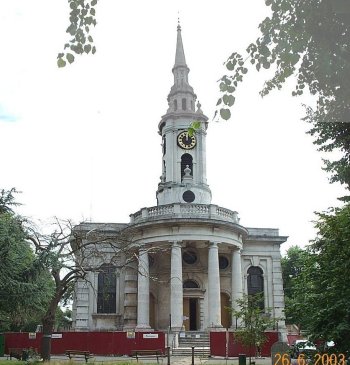 St Paulís Deptford was begun in 1713 and built in the Baroque style by architect Thomas Archer who was a student
St Paulís Deptford was begun in 1713 and built in the Baroque style by architect Thomas Archer who was a student
of Sir Christopher Wren, and also was one of the original church Commissioners.
The Bishop of London consecrated the church on the 30th June 1730.
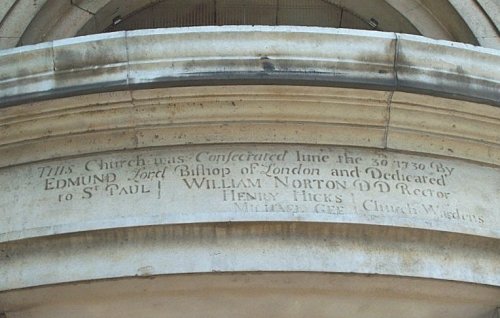
According to the church records the first heating in the church was carried out during a Victorian restoration of 1856 by John Whichcord. The date when the Grundy warm air stove was installed has still not been established. A part of the Crypt area was closed off to form a deep pit in which the stove could be erected. The whole area of this pit at church floor level was covered with open style cast iron gratings to allow the heat from the stove and flues to rise into and warm the church. Originally fired with solid fuel the stove was later converted to oil firing in the early 1900's.
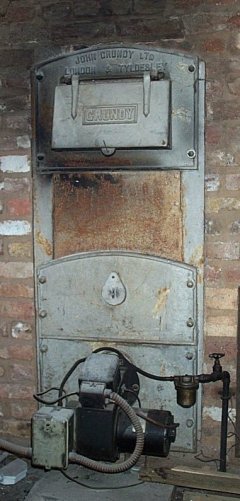 |
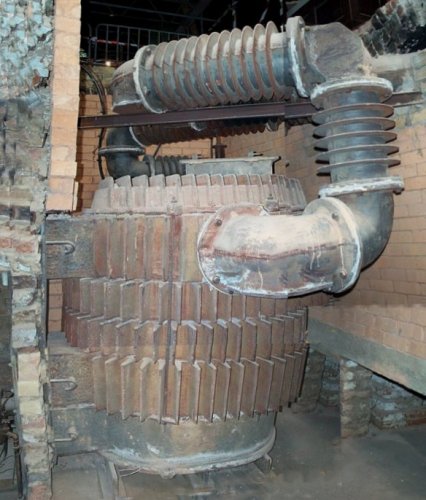 |
The stove is of large size and weight, circular in shape, which very much resembles the size and shape of the Gurney stove by the use of vertical fins. This finning greatly increased the stoveís heat transfer surface area producing a greater heat output supplied to the interior of the church. The four fined annular ring sections are fitted together and jointed with a form of sealing gasket or compound. The whole assembly is then made airtight by tightening the fitted tie bars.
This Grundy stove differs basically from the Gurney stove in that it is of sectional construction, manufactured in four horizontal parts plus the top and base sections and then assembled in position. The Gurney stove was manufactured as a single piece of equipment.
Both Grundy and Gurney stoves were installed in many of the large Cathedral Churches and Abbeys throughout the country during the second half of the Victorian period. Sadly only a few working Gurney stoves still exist, but no working Grundy stoves have yet been found.
The two cast iron flue outlet pipes are located at the top of the side, opposite each other. Both flue pipes have then been deliberately routed across the top of the pit. Several purpose made flanged / finned flue pipe sections have been fitted into the flues to ensure that as much heat as possible was extracted from the flue gases before they passed into the chimney. These finned lengths would nowadays be described as flue gas economisers.
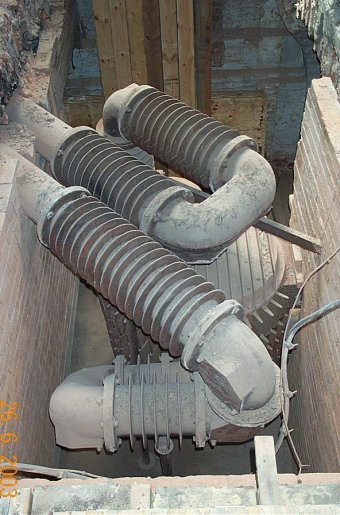 |
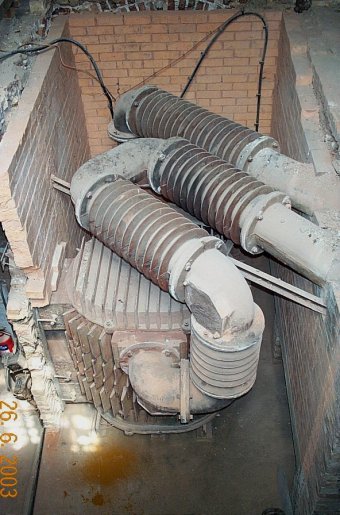 |
JULY 2003
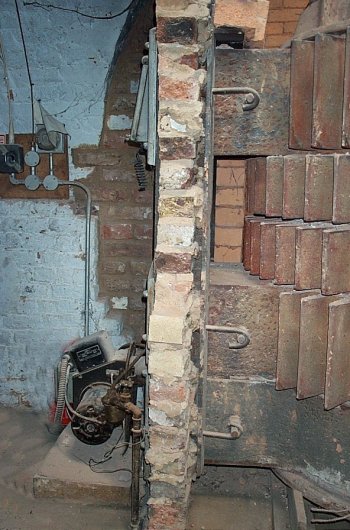
It is now to be preserved as an example of Victorian engineering craftsmanship illustrating how heating engineers in that period of time warmed these large buildings by the use of warm air stoves.
The installation in the church of a wet heating system must cast some doubt about how effective this Grundy warm air stove proved to be.


